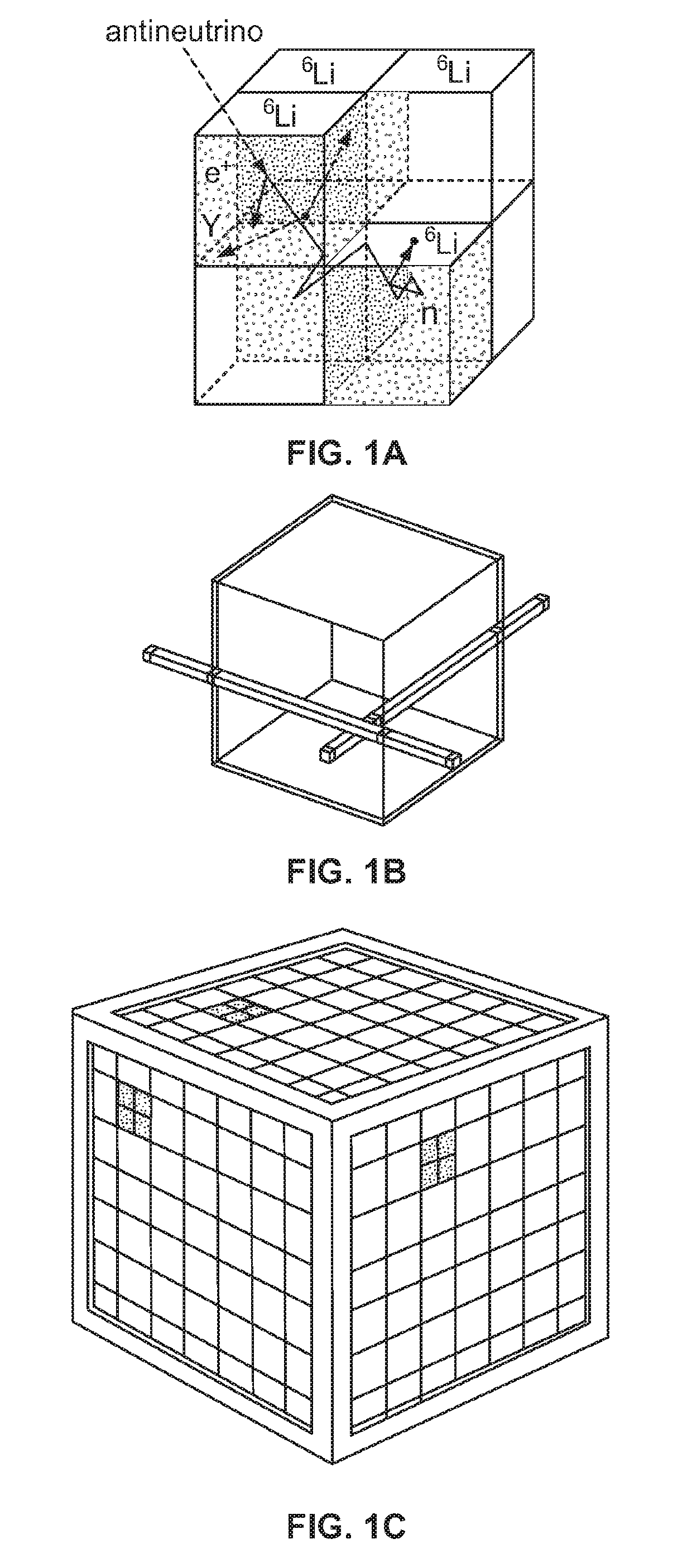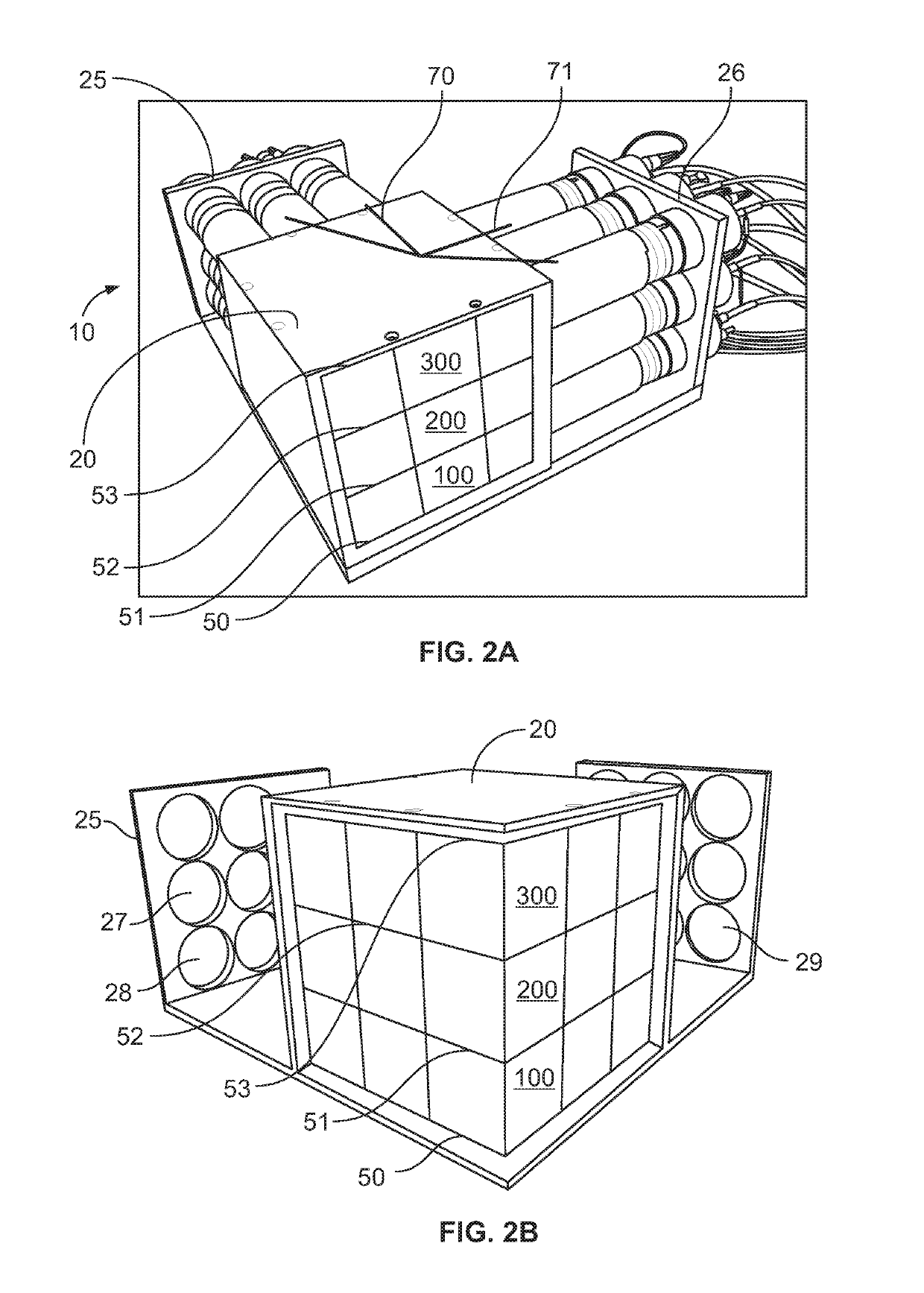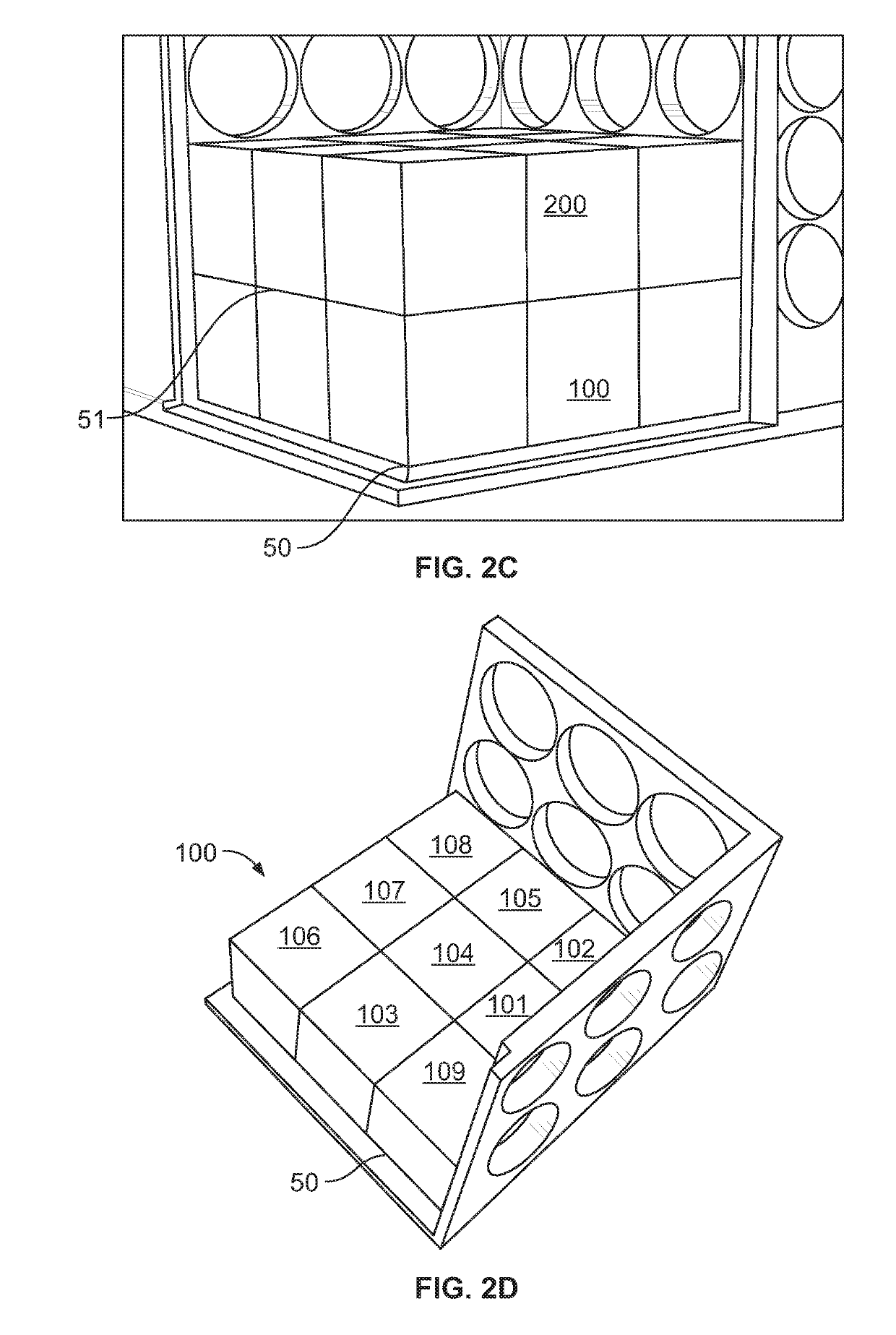Antineutrino Detection Based on Heterogeneous Scintillation Lattice
a technology of antineutrino detection and scintillation lattice, which is applied in the direction of instruments, radiation measurement, measurement devices, etc., can solve the problems of high personnel intensity of international atomic energy agency (iaea), and significant strain on iaea's technical and personnel infrastructure, etc., to achieve clean neutron tagging, good spatial resolution, and efficient rejection
- Summary
- Abstract
- Description
- Claims
- Application Information
AI Technical Summary
Benefits of technology
Problems solved by technology
Method used
Image
Examples
Embodiment Construction
[0033]Detailed embodiments of the present invention are disclosed herein; however, it is to be understood that the disclosed embodiments are merely exemplary of the invention, which may be embodied in various forms. Therefore, specific structural and functional details disclosed herein are not to be interpreted as limiting, but merely as a representative basis for teaching one skilled in the art to variously employ the present invention in virtually any appropriately detailed method, structure or system. Further, the terms and phrases used herein are not intended to be limiting, but rather to provide an understandable description of the invention.
[0034]In a preferred embodiment, the present invention combines the very clean neutron tag of the SoLiD design with the very high light collection efficiency of a ROL, while maintaining the digital spatial event reconstruction. As shown in FIGS. 2A-2D, radiation detector 10 includes a housing 20, supports 25 and 26 as well as openings 27-29...
PUM
 Login to View More
Login to View More Abstract
Description
Claims
Application Information
 Login to View More
Login to View More - R&D
- Intellectual Property
- Life Sciences
- Materials
- Tech Scout
- Unparalleled Data Quality
- Higher Quality Content
- 60% Fewer Hallucinations
Browse by: Latest US Patents, China's latest patents, Technical Efficacy Thesaurus, Application Domain, Technology Topic, Popular Technical Reports.
© 2025 PatSnap. All rights reserved.Legal|Privacy policy|Modern Slavery Act Transparency Statement|Sitemap|About US| Contact US: help@patsnap.com



